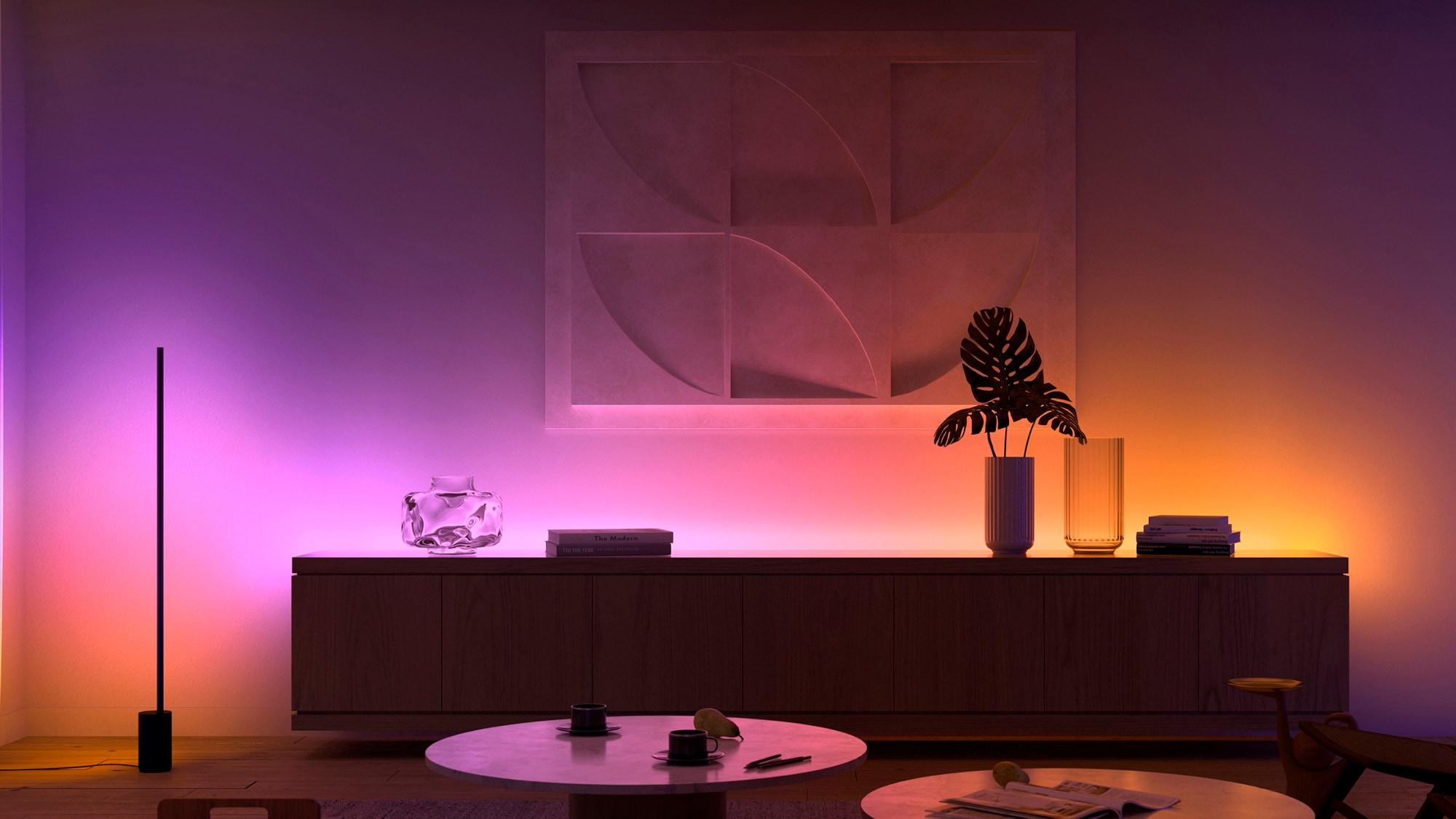As the world of smart home technology continues to evolve,illuminating our spaces has become more than just a functional necessity; it’s now an art form. In 2025, two titans of the smart lighting industry—Philips Hue and Nanoleaf Essentials—stand at the forefront, each offering an array of features designed to enhance our environments and elevate our moods. with dazzling colors,intuitive controls,and innovative designs,the choice between these two systems can feel overwhelming. This article delves into the strengths and weaknesses of the Philips Hue Starter Kit and Nanoleaf Essentials, helping you decide which smart lighting system deserves a spot in your home. Join us as we explore their unique offerings, compatibility, and performance, shedding light on the ultimate question: which brand will illuminate your world more brilliantly?
Exploring the Ecosystem: Compatibility and Integration of Philips Hue and Nanoleaf Essentials
The beauty of modern smart lighting lies in its ability to create harmonious environments tailored to individual preferences. Philips hue offers an extensive integration ecosystem, allowing users to seamlessly connect with platforms like Google Assistant, Amazon Alexa, and Apple HomeKit. This compatibility extends to numerous smart home devices, making it an appealing choice for those looking to build a comprehensive smart home experience. Additionally, Philips Hue’s unique Entertainment API enhances the user experience by synchronizing lights with music, movies, and games, ensuring that your living space is more than just a backdrop but a dynamic participant in your entertainment.
On the other hand, Nanoleaf Essentials shines in its compatibility with the Thread network, which plays a crucial role in increasing the reliability and speed of connections between smart lighting devices. this technology eliminates the need for a central hub, allowing for direct communication between compatible devices. Users can leverage apple HomeKit integration while enjoying unique features like customizable scenes and moods through the Nanoleaf App. Furthermore, both lighting systems can co-exist in a shared ecosystem, providing flexibility for users who appreciate the aesthetic and functional attributes of each brand.

Lumens and Colors: Analyzing Lighting Quality and Customization Options
When it comes to assessing the quality of smart lighting, two key factors are frequently enough at the forefront: lumens and color rendering capabilities. Philips Hue boasts a maximum output of 1600 lumens, providing bright illumination suitable for larger spaces or tasks requiring focus. simultaneously occurring, Nanoleaf Essentials offers a range of around 1100 lumens but makes up for it through its unique color flexibility. With both systems supporting over 16 million colors, users can transform their environments to cater to various moods or occasions. The superior color temperature tuning in Philips Hue allows for warmer morning tones and cooler shades for productivity, while Nanoleaf focuses more on artistic displays, appealing to a user base seeking to create immersive visual experiences.
Customization plays a pivotal role in user satisfaction, and both brands cater to different aspects of creativity and functionality. Philips hue’s app offers routine programming and scene selection, enabling users to create tailored settings through a user-friendly interface. This is notably useful for home automation scenarios, where each room can have its unique ambiance. On the other hand, Nanoleaf Essentials shines in terms of dynamic RGB features and panel configurations, allowing for an array of artistic arrangements on walls. Here’s a speedy comparison of the features that emphasize their strengths:
| Feature | Philips Hue | Nanoleaf Essentials |
|---|---|---|
| Max Lumens | 1600 | 1100 |
| Color range | 16 million+ colors | 16 million+ colors |
| Dynamic modes | Routine programming | Artistic displays |
| App Functionality | User-friendly interface | Unique panel configurations |

User experience in Focus: Installation, App Functionality, and Daily Use
The journey toward smart lighting bliss begins with installation, and here, both the Philips Hue Starter Kit and Nanoleaf Essentials offer user-friendly setups, albeit with distinct experiences. Philips Hue shines with its simple plug-and-play approach.Just connect the bridge to the router, link the bulbs, and voilà! The Hue app leads users effortlessly through setup. In contrast, Nanoleaf Essentials employs a similar methodology but adds a touch of flair with its Touch-to-Connect feature, allowing for a seamless pairing process that feels innovative.Users appreciate the clear instructions and visual aids provided in both apps, promoting confidence for even the most tech-averse individuals.
When it comes to daily functionality and ongoing use, both systems provide a responsive and intuitive experience, with different merits. Philips Hue’s app is robust, providing extensive customization options including:
- Room setup for personalized lighting zones
- Scenes to match moods or activities
- Integration with smart assistants for voice control
On the other hand, Nanoleaf Essentials emphasizes creativity with its unique Rhythm Mode, allowing users to synchronize lights with music, creating a dynamic ambiance. The ease of use in both apps is commendable,but enthusiasts may find Philips Hue’s deeper customization tools slightly more versatile for complex setups,while Nanoleaf excels in delivering an engaging and artistic daily lighting experience.

Value for money: Cost Comparison and Long-Term Investment Considerations
When assessing the Philips Hue Starter Kit and Nanoleaf Essentials, it’s crucial to look beyond the initial purchase price.The Philips Hue system generally starts at a higher initial investment, often offering a wider range of bulb types and accessories. However, the cost is offset by its compatibility with multiple smart home systems and the extensive ecosystem it supports. Users benefit from the long-term flexibility of integrating with various products and technologies,allowing for an expansion of their smart home without the need to start anew. Conversely,Nanoleaf Essentials provides a more budget-friendly entry point,especially attractive for users prioritizing aesthetics and unique design,making it less overwhelming for first-time buyers.
Long-term investment considerations also play a critical role in the cost comparison. Evaluating the lifecycle costs can reveal significant differences. While Philips Hue bulbs are known for their durability and longevity,usually bearing a longer warranty period,Nanoleaf Essentials excels in providing energy-efficient smart lighting at a lower energy consumption rate. here’s a quick overview:
| feature | Philips Hue | Nanoleaf Essentials |
|---|---|---|
| Initial Cost | Higher | Lower |
| Durability | Longer Lifespan | Moderate Lifespan |
| Energy Efficiency | Moderate | High |
| Compatibility | Broad Ecosystem | Limited Integration |
Taking these factors into account is essential for homeowners looking to make a smart decision between the two options.Ultimately, the best choice will depend on individual needs, preferences for design, and how integrated or versatile users wish their smart lighting systems to be over the years.
Closing Remarks
In the ever-evolving world of smart home technology, choosing the right lighting system can make all the difference in curating an atmosphere that perfectly fits your lifestyle. As we’ve explored the nuances of the Philips Hue Starter Kit and Nanoleaf Essentials, it’s clear that both options shine brightly in their own ways—literally and figuratively.
Philips Hue, with its expansive ecosystem and rich history, offers a seamless integration of functionality and variety.Conversely, Nanoleaf Essentials captivates with its artistic designs and user-friendly experience, appealing to those who crave creativity in their lighting choices.
Ultimately, the decision hinges not just on specifications or pricing, but on your personal vision for your space. Will you go with the time-tested versatility of Philips Hue,or embrace the innovative flair of Nanoleaf Essentials? As we step into 2025,the choice is yours,illuminating your path in the smart home revolution. Whichever you choose, may your home be a canvas painted in the colors of your dreams.
